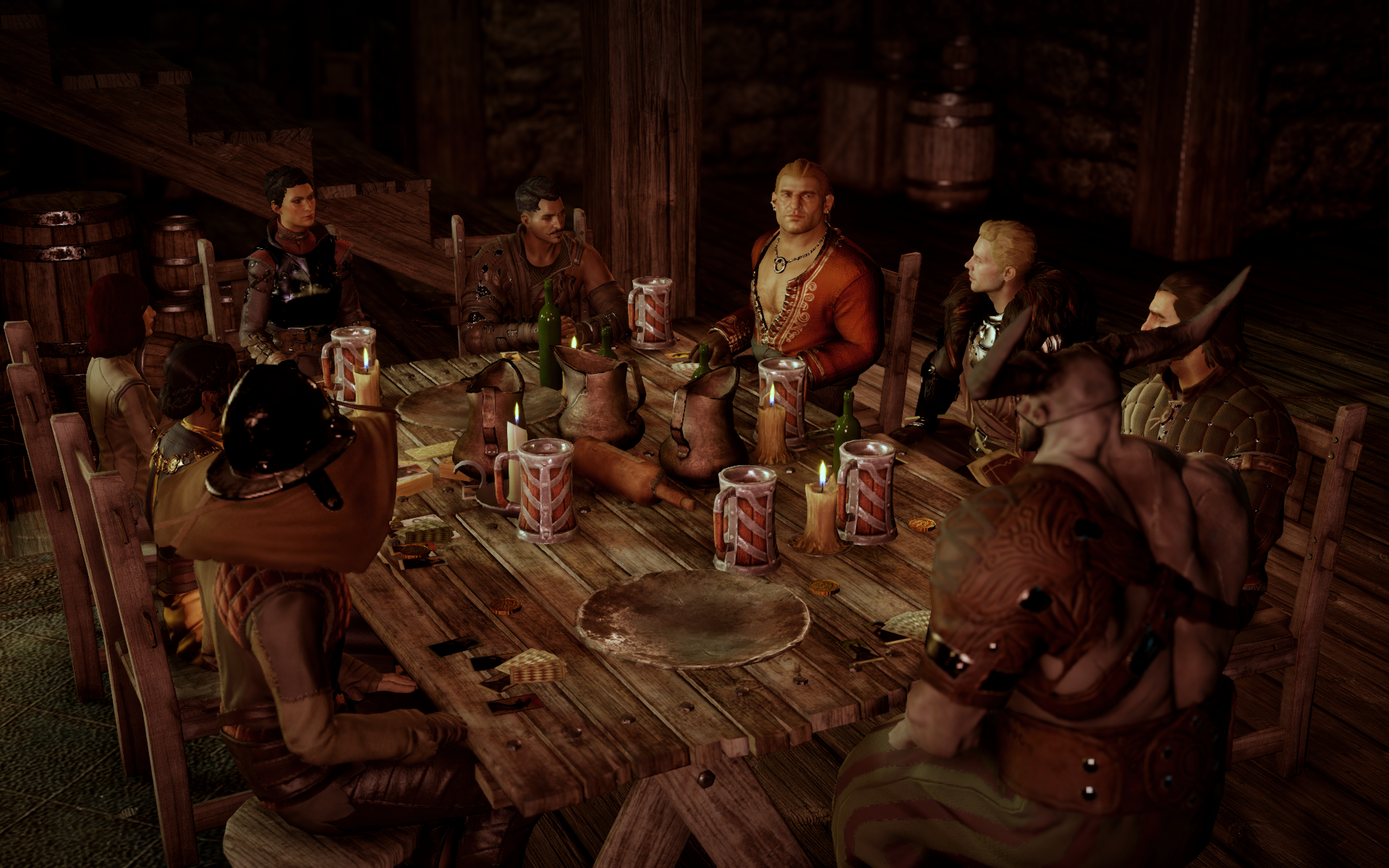Our Verdict
A fantastic campaign and massive open environments, soured only slightly by minor, persistent flaws.
PC Gamer's got your back
What is it? The third in Bioware's series of fantasy RPGs.
Copy protection: Origin
Price: £50/$60
Release date: 18 November
Publisher: EA
Developer: Bioware
Multiplayer: 4-player co-op
Website: Official site
Here’s a quick Dragon Age quiz. Who are the Seekers of Truth? What’s their relation to the Chantry? If Divine Justinia V is killed in a massive explosion that creates a breach in the fabric of reality, do her closest advisors have the political authority to reform the Inquisition? What is the Inquisition? What was the Inquisition? If a person walks out alive from the now swirling green demon hole, are they the Herald of Andraste? What do the Tevinter Imperium have to do with anything?
If you don’t know these things, Dragon Age: Inquisition’s opening lore-maelstrom threatens to drown you. Over two previous games, an expansion, and numerous tie-in comics and novels, BioWare has created a rich and broad history, much of which shapes the events of this enormous third RPG. It’s initially overwhelming, as names of people, places and events are tossed casually into the narrative.
My advice? Stick with it. Inquisition is taking you on a long and satisfying journey, with plenty of time to work out what’s what and who’s who. Now, after the 50-plus hours it took me to finish the main campaign, I feel more versed in the intricacies of the world than ever. More than that, I feel like I’ve had a bigger impact on it than in either previous game. I’ve navigated the polite intrigue of Orlesian politics, recruited powerful and dangerous allies, and elevated the Inquisition from a band of fringe heretics into one of the most feared and admired orders in all of Thedas. Also, I’ve fought a dragon or two.
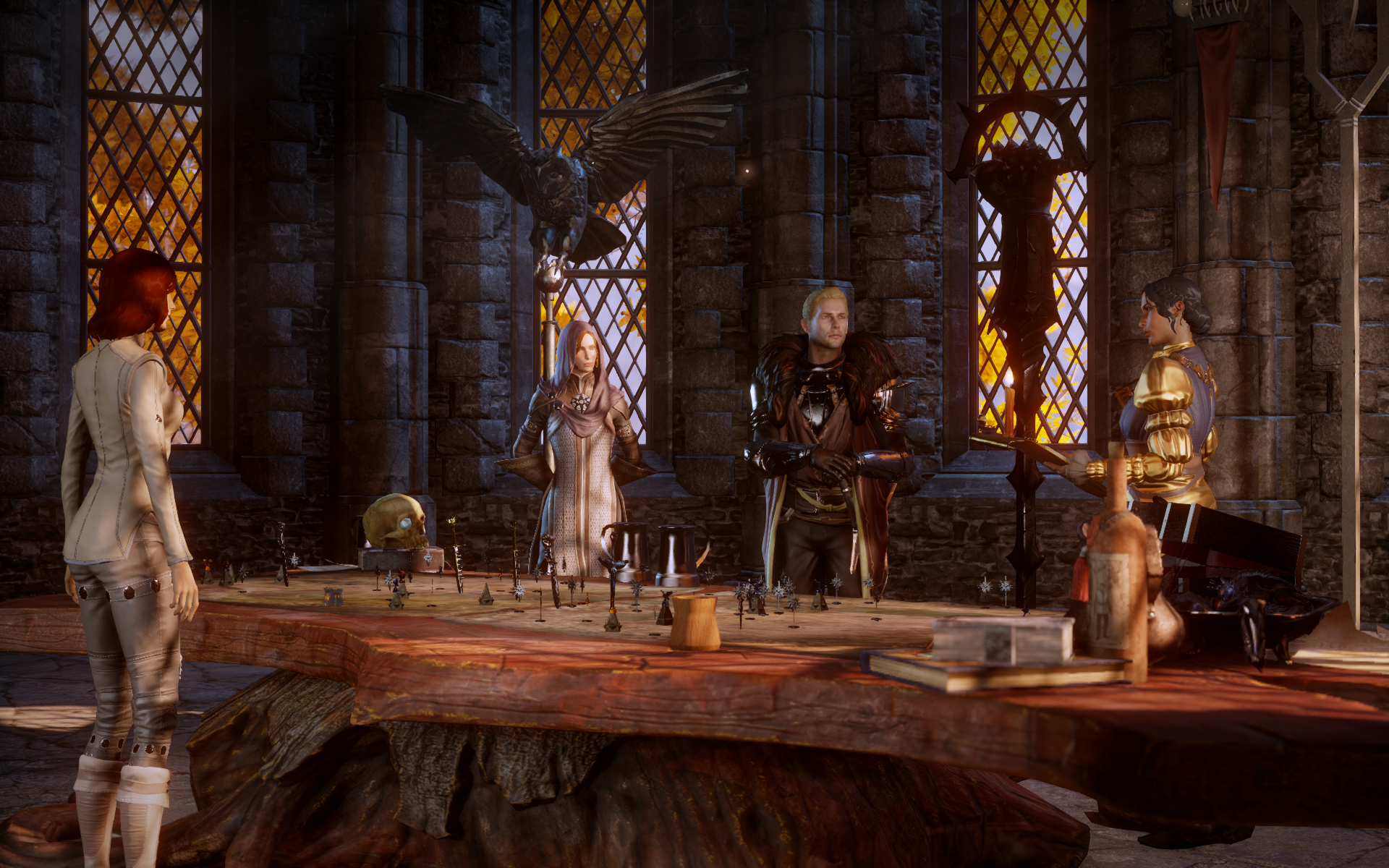
The game opens in the village of Haven. It’s ten years after the events of Dragon Age: Origins, a few weeks after the epilogue of Dragon Age 2, and the exact moment that the Temple of Sacred Ashes is destroyed in a sky-tearing blast of unknown origin. Inside, the head of the Chantry—the world’s main religious organisation—was attempting to negotiate peace between the warring Templars and mages. Where the temple once stood, there is now only a dangerous and growing vortex that threatens to engulf the world. You are the only survivor.
Who you are, and why you were at the peace talks, depends on the character you create. There are four races to pick from: human, dwarf, elf or hulking grey Qunari. This choice will provide plenty of special dialogue options based on your character’s culture and history, but it doesn’t affect the setup. You emerge from the breach with no memory of what happened, and with the power to close rifts—mini-tears in reality from which demons can cross into the world.
Whatever your choice, you’re a curiously humanised Inquisitor. I played as a Dalish Elf—a people known for their insular nature and distrust of outsiders. Yet I didn’t—and couldn’t—act like any of the Dalish I’d met in the previous games. Similarly, Qunari Inquisitors are described as having rejected the Qun—the strict philosophy that made DA:O’s Sten such a fun guy to have at parties. The world does its best to respond to your race, and the differences add a welcome flavour. In terms of the range of your dialogue and actions, however, it can feel like a mostly aesthetic choice.
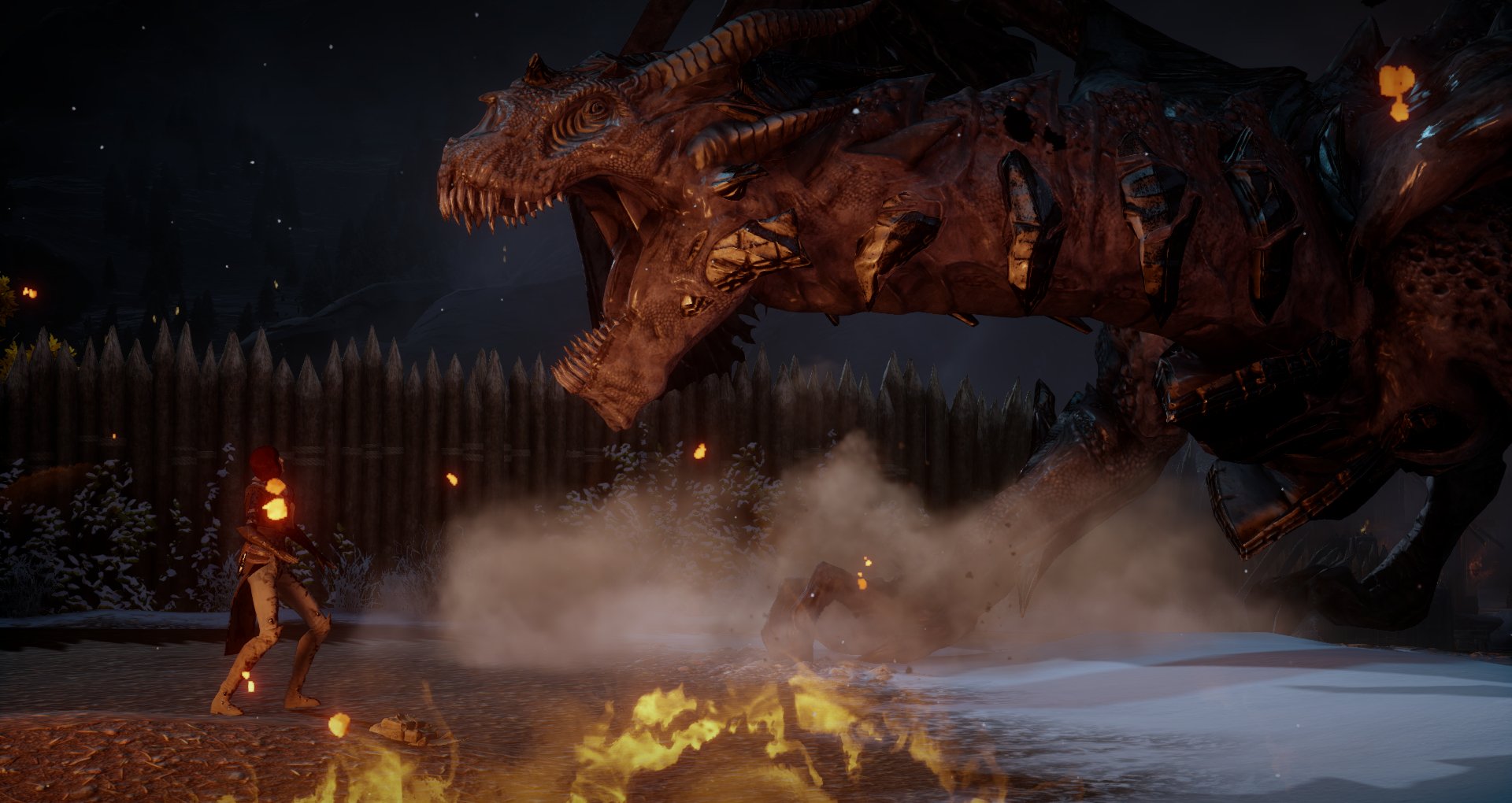
Seeking closure
The breach is the story bridge that links the high-level political posturing of the world’s factions to your own need to venture out and kill things. Closing it requires power, and that, initially, means securing the support of either the rebel mages or the now autonomous Templars. To approach either, you’ll first need to increase the Inquisition’s support—by completing quests. Successfully check something off your to-do list, and you’re awarded Power and Influence. Power lets you unlock new areas and progress the story, while Influence unlocks perks, from new conversation options to enhanced lockpicking for your party’s rogues.
You’ll have plenty of opportunities to earn both, because the world is huge and packed full of things to do. The first main area you unlock is the Hinterlands. It’s an enormous expanse, filled with hills and cliffs, and crammed with nooks and crannies hiding secrets, sidequests and lush, verdant scenery. About 30 hours into the game, I returned to check off another in my long list of tasks. I’d been poking and prodding the area throughout, gradually uncovering the borders of the map. This time, I encountered a dragon: first flying overhead, then landing in a bowl of charred trees and scorched rocks. It was only the second I’d seen, and its presence wasn’t tied to a quest. It was just out there, waiting to be found.
Not all areas are this big. The Orlesian city of Val Royeaux is a mere marketplace square, used for only a handful of quests throughout the campaign. Then there’s The Fallow Mire, which acts as an almost standalone undead vignette across a mostly linear area. Predominantly, though, you’ll be charting massive, open spaces, each offering a distinct environment and ecosystem. Some, like the forests of the Emerald Graves, are absolutely beautiful—filled with wild and vibrant plant life in a multitude of primary colours.
My first fight with a dragon will be one of my enduring gaming memories of this year.
In terms of the size and scope of the environments, Dragon Age: Inquisition is the total opposite of Dragon Age 2. For the most part, that’s welcome, but I do miss the presence of a proper, bustling city. Inquisition is a game about taming hostile lands, which means there’s nowhere as dense with people as DA2’s Kirkwall, or even DA:O’s main city of Denerim. Instead, the most populated area of the game is the Inquisition’s headquarters. You’ll return here between missions to talk to companions, assign tasks to advisors, and optionally behead the odd criminal or two.
The advisors are a nice addition. Like your companions, they offer personal quests and will chat between missions. Unlike your companions, you can’t take them out into the field. Instead they can be summoned to the War Council, to be given tasks through a map view of Ferelden and Orlais. Each assignment can be tackled through diplomacy, intrigue or military force, with different results and completion times depending on the advisor used. Once assigned, a timer ticks down, after which you can collect your reward.
The time for completion can vary from ten minutes to the best part of a day, but it ticks down even when you’re not in the game. This is a great touch. For one thing, it means you’ll have a reward waiting whenever you resume the game. More importantly, it gives a sense of the Inquisition as a growing political force. It was these indirect tasks, as much as my own actions through the story and questing, that sold the sense of the order’s ascendance to legitimacy and fame.
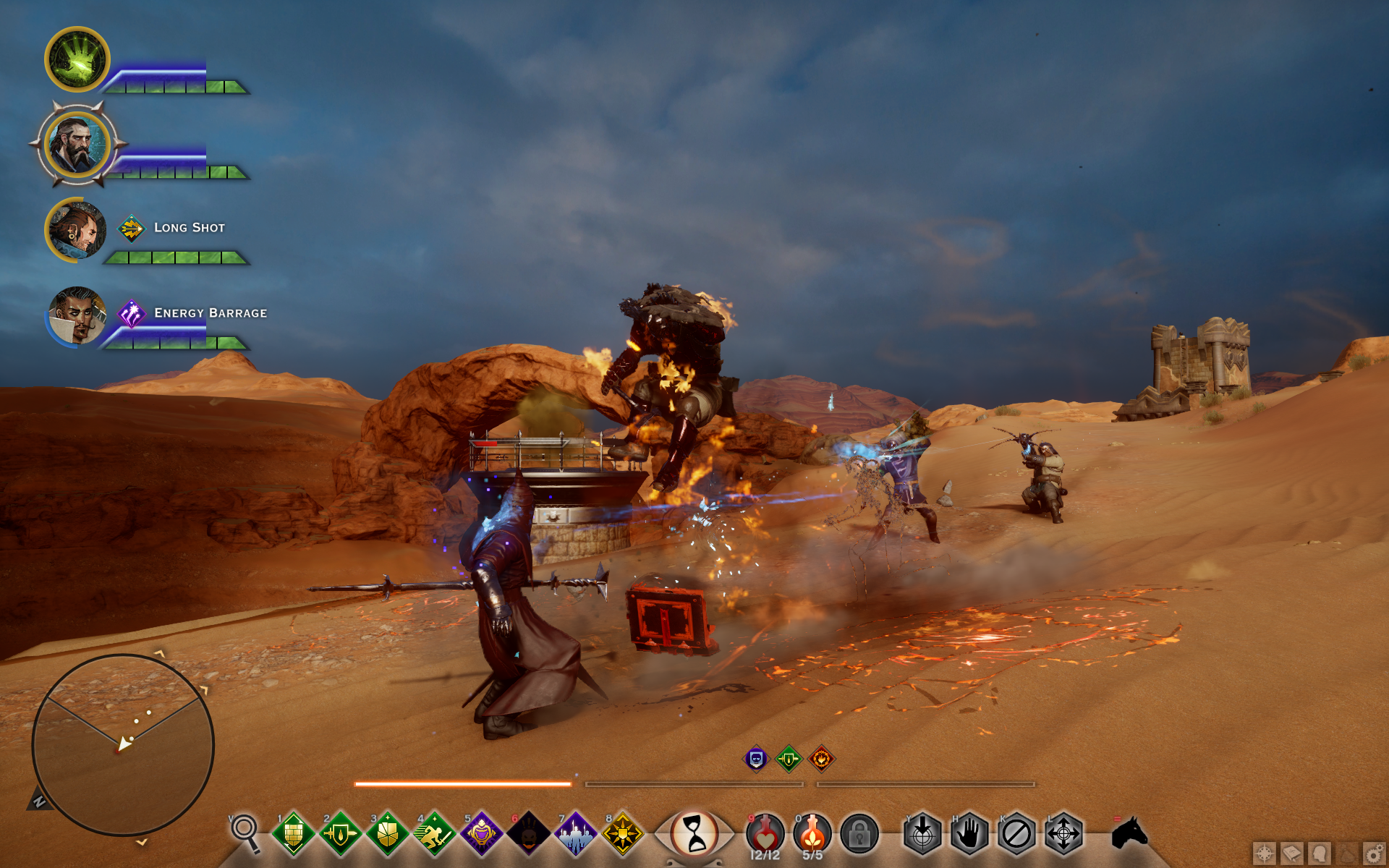
Reviewed on: Core i5-3570K, 8GB RAM, GeForce GTX 670
Variable framerate: Yes
Anti-aliasing: Post-Processing and MSAA
Misc. graphics options: Lots, including individual quality settings for textures, shadows, terrain, water and vegetation.
Remappable controls: Yes
Gamepad support: Yes
Alas, my two-year old rig couldn't handle Dragon Age: Inquisition on its Ultra preset, and frequently dipped below 30 fps. With some tinkering, I was able to average around 40-50 fps, while still keeping the majority of its settings at High. There's plenty to tweak if you're experiencing slow-down, and the environments still look beautiful even with some settings turned down.
Inquisition does suffer lengthy loading times as you move between zones. Loading is infrequent—there's none as you travel the open world—but if you're jumping around for quest completion, be prepared for some delays.
Ram raider
Out in the world, there’s plenty of busywork to bulk out each zone. Inquisition’s sidequests are a variable bunch, and the worst resemble MMO fetch quests. Context is important here. For instance, early in the Hinterlands, you’re asked to gather the meat from ten rams in order to feed a camp of refugees. This makes sense—it’s early in the story, and the Inquisition is still weak. Such charitable acts will naturally raise the order’s standing. Fine. Elsewhere in that zone, you can pick up a quest to kill three large bears. It’s triggered when you find a note—addressed to someone else—that can be glibly summarised as “first you get the bear claws, then you get the power, then you get the women.” There is no reason at all for the Inquisitor to do this, other than it provides a flimsy excuse to visit that part of the map.
Fortunately, there’s plenty of substance too. The campaign’s story is gated by both the suggested experience level, and the Power cost of unlocking each mission. I was easily able to earn enough of both while focusing only on the most interesting objectives. As long as you’re exploring the world, righting wrongs and fighting hostiles, there’s no need to churn through the padding. Even so, the open-world activities are different in nature to past BioWare games. Many have a clear and rigid goal, with little room for on-the-fly moral choices. However you wield the Inquisition, its intentions are good. When tasked with clearing an area of evil, there’s little room to question whether things are really what they seem. They are. Now go and kill the evil.
To counterbalance this, the main story missions are filled with tough, world-shifting decisions. They are, almost without exception, wonderful scenarios. Each mission is distinct, memorable, and significantly moves the story along. Initially, the forming of the Inquisition seemed hurried, and underwhelming because of it. After about 20 hours, that was revealed to be a deliberate move—through a sequence that entirely changed my perception of what the order was, and my character’s relationship to it. Before that point, her involvement seemed born out of necessity. Afterwards, it was strengthened by conviction.
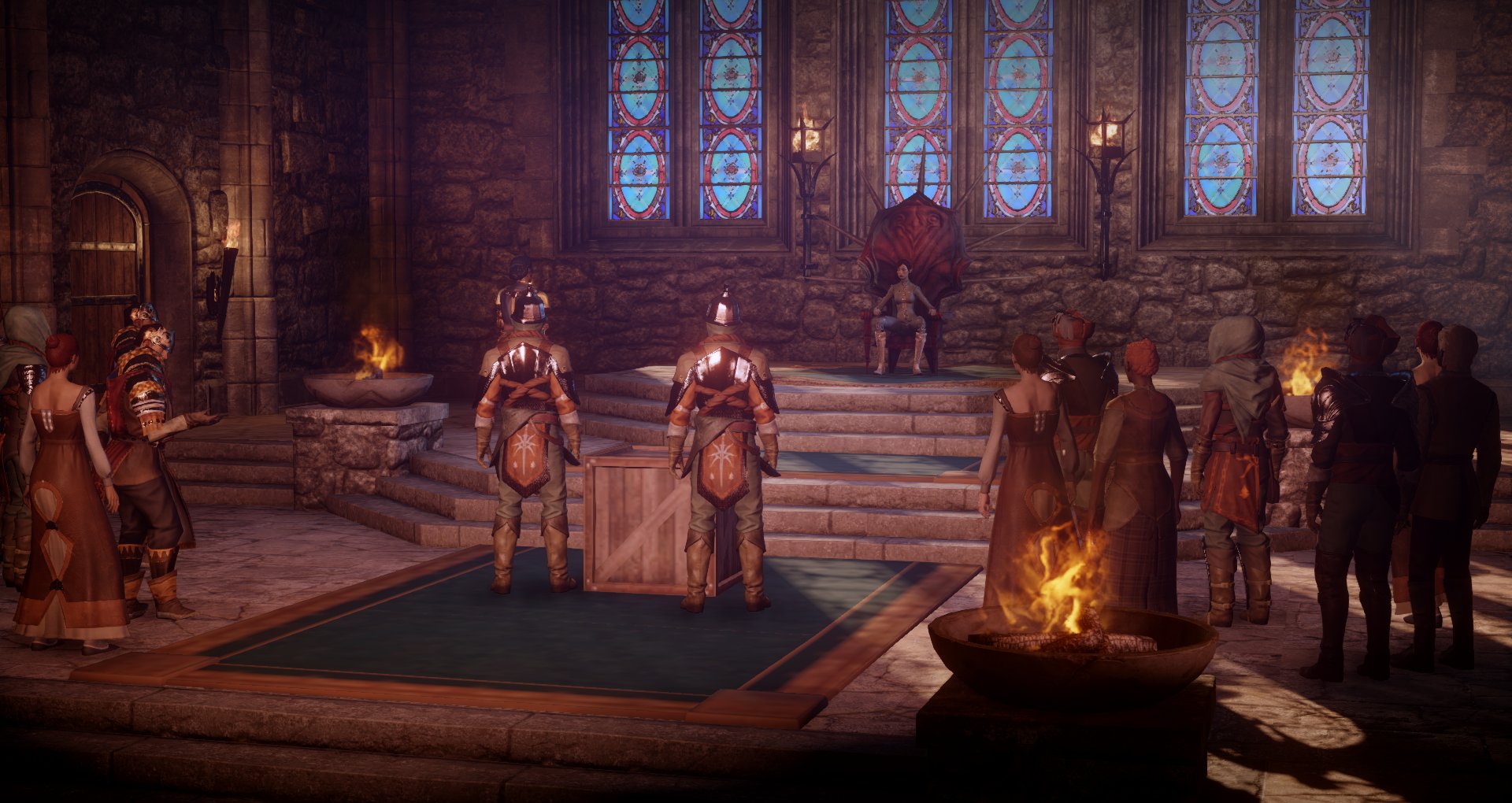
The story also provides Inquisition’s few instances of lengthy, linear combat encounters. The combat system has been significantly changed for this incarnation. You still have Dragon Age’s classic trio of Warrior, Rogue and Mage—each with multiple skill trees to further define the role. Now, though, the emphasis is on direct attacks, using the left mouse button to swipe away at enemies between activation of the skills assigned to your hotbar.
For the most part, it works, but there are persistent minor annoyances. I played as a rogue, and found the combat animations too slow for my liking. You can avoid a lot of damage by dodging the heaviest, most telegraphed enemy strikes, but your movement is limited while attacking. Without a way to instantly cancel out of an attack, I found myself having to wait for the animation to finish—often being hit as a result. Targeting enemies can be troublesome, too. There are few things more frustrating than activating your Inquisitor’s leaping strike, only for her to vault off in the wrong direction because the game hasn’t registered that you’re attacking the enemy in front of you. The best I can say is that I learned to compensate for these issues, and by the end could manoeuvre through fights with something approaching grace.
Control over the party’s tactics has been simplified. In previous games, orders resembled absurd algebra puzzles. If Morrigan drops below 25% health, should she turn into a swarm of insects? Sure, but only if she stops being insects at lesser than or equal to 50% mana. In Inquisition, you have some agency over when healing items are consumed, but skills can only be enabled, disabled or marked as preferential—giving them priority over other skills.
I miss the fine-tuning the old system enabled. Controlling Inquisition’s party requires either accepting the inefficiencies of the AI, or spending a lot of time micro-managing. Choose the latter, and you’ll find the tactics battle screen—used to assign orders to the party members you’re not currently controlling—has its own issues, all of which are with the camera. It gives you a top-down view of the battlefield, but is awkward to move and doesn’t zoom out quite far enough. There are times when it shines, such as during battles with dragons where there’s a large space and a single target. Against multiple enemies, things can get confusing.
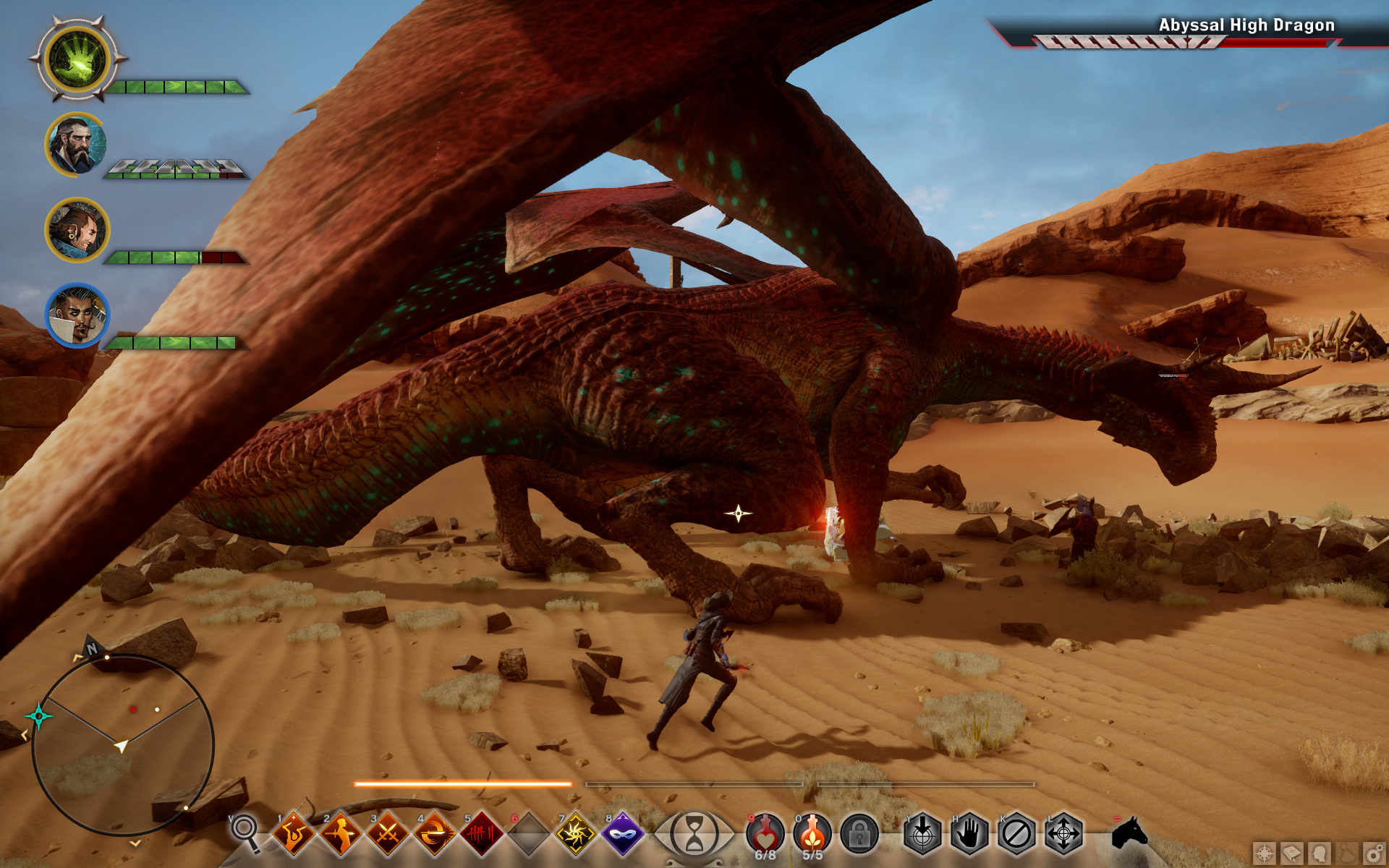
Supply and demand
The biggest combat change is in how healing works. Mages can no longer cast restorative spells, and characters don’t regenerate health between fights. Instead, your entire party has a shared pool of potions—eight initially, with the possibility of upgrading. These can only be restocked at the camps you set up out in the world, or from supply caches found scattered along the path of a main mission. It’s a decent system, and completely changes how battles are arranged. For one thing, difficulty is no longer tied to the number of enemies, but rather their composition. Even when fighting three or four bandits, the presence of a shield-carrying Templar can provide a significant challenge. Gone too are the long crawls through enemy-infested caves. Most battles are against small and often avoidable groups out in the open world, with spelunking a limited and often short distraction.
That this review has highlighted plenty of issues is because Inquisition is imperfect in lots of small, yet noticeable ways. Make no mistake, though: I love so much of what this game is. The story is something I’m eager to discuss with people as they play through the game—to discover what they did, and learn of the breadth of divergence possible in each person’s campaign. More than that, Inquisition is filled with moments that make it such a fulfilling and worthy sequel for the series. The heartwarming interactions with those companions I befriended. The brief touches of humour and levity. The way that, through the Dragon Age: Keep website, my decisions across the previous games have been woven into the fabric of this one. My first fight with a dragon—the way its animations perfectly conveyed arrogance, annoyance, and eventually exhaustion—will be one of my most enduring gaming memories of this year.
There’s even co-op multiplayer, in the style of Mass Effect 3’s horde mode. As I write this, the servers are empty, and so I’ve been unable to test it. Whatever its quality, it doesn’t affect a singleplayer campaign that, all things considered, is a resounding success. How much you enjoy Inquisition will likely depend on what it is you enjoy about RPGs. If you want complex systems and hardcore challenge, it could potentially disappoint. I don’t. I want a rich world, interesting characters, and a dramatic and memorable plot. Judged on those criteria, Dragon Age: Inquisition sits happily alongside BioWare’s best.

So the big green hole is bad, yeah?
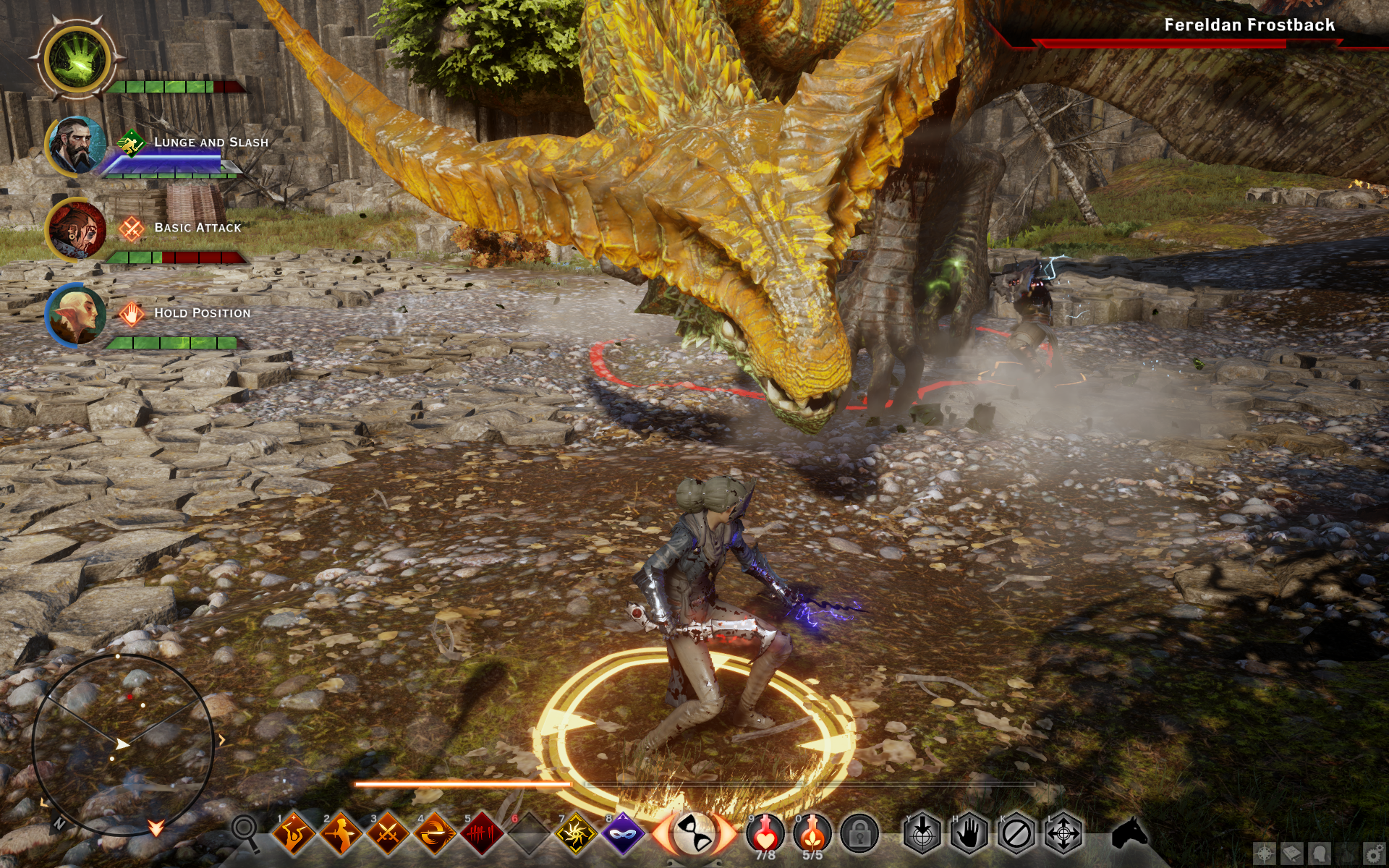
I’m going to need a bigger dagger.
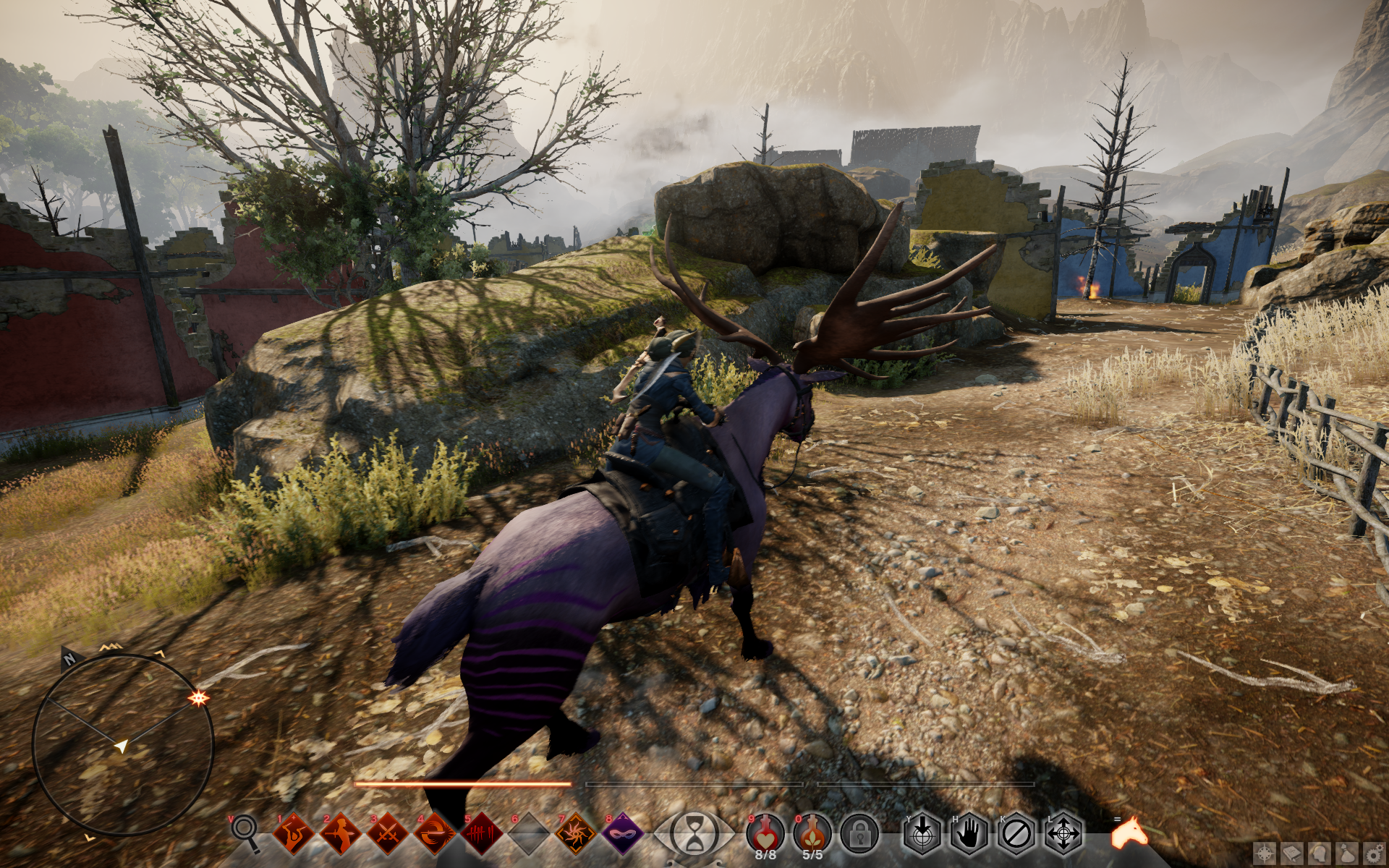
Why ride a horse when you can ride a weird, purple reindeer thing?
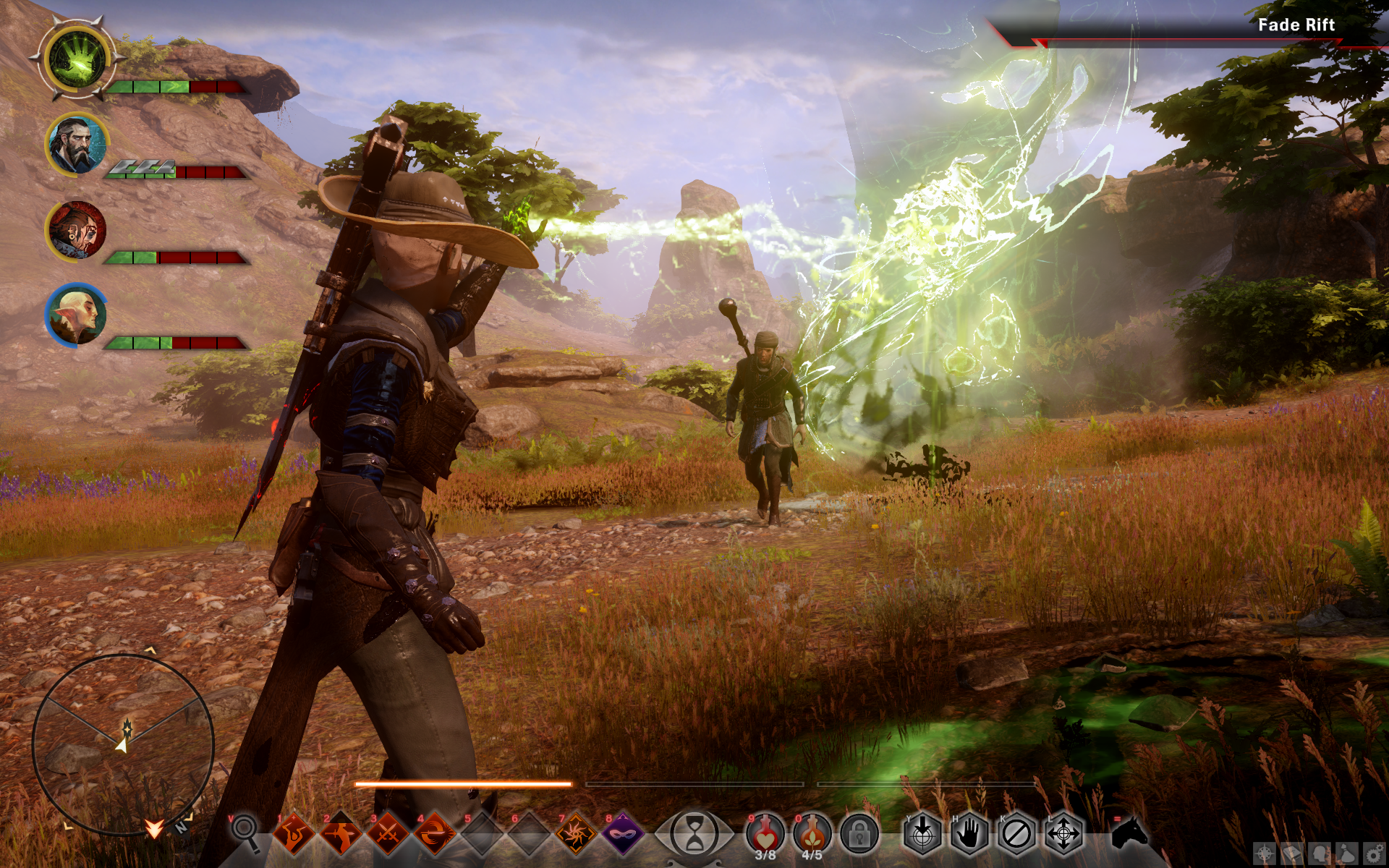
Only the Inquisitor can close Fade Rifts. So, you know, do that.
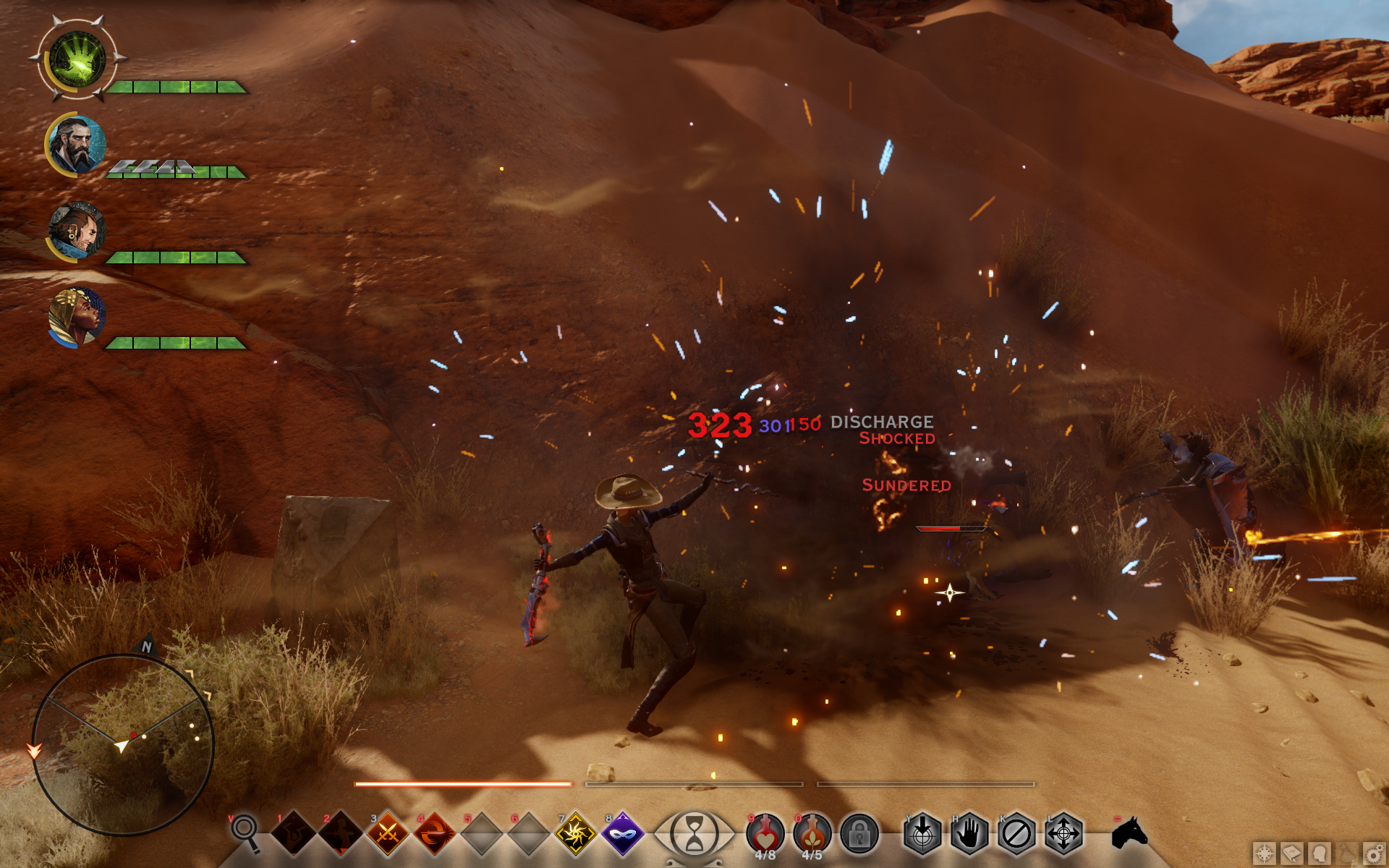
There’s a dying hyena somewhere under all this.
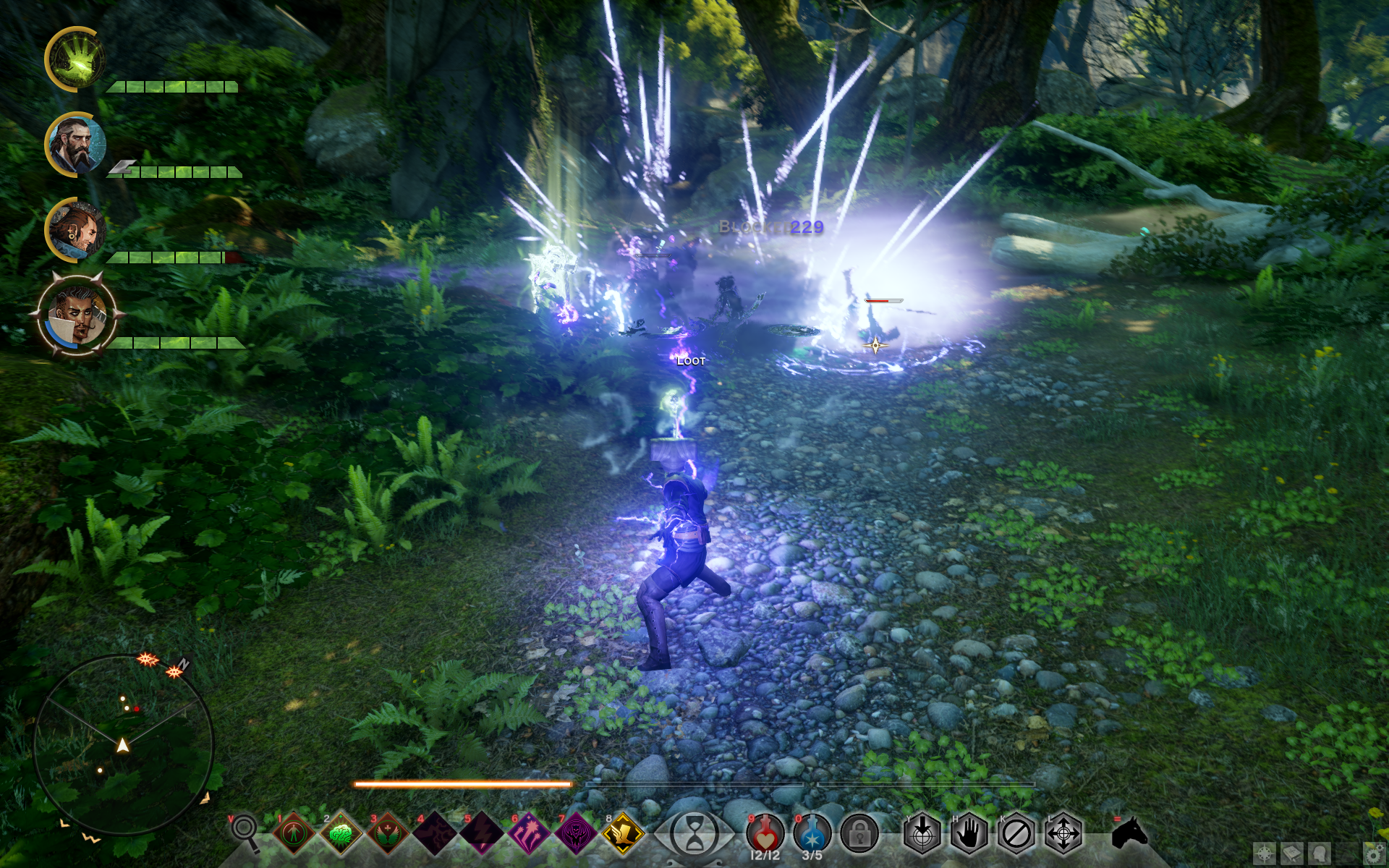
You can turn on friendly fire, if you want mages to kill everyone constantly.
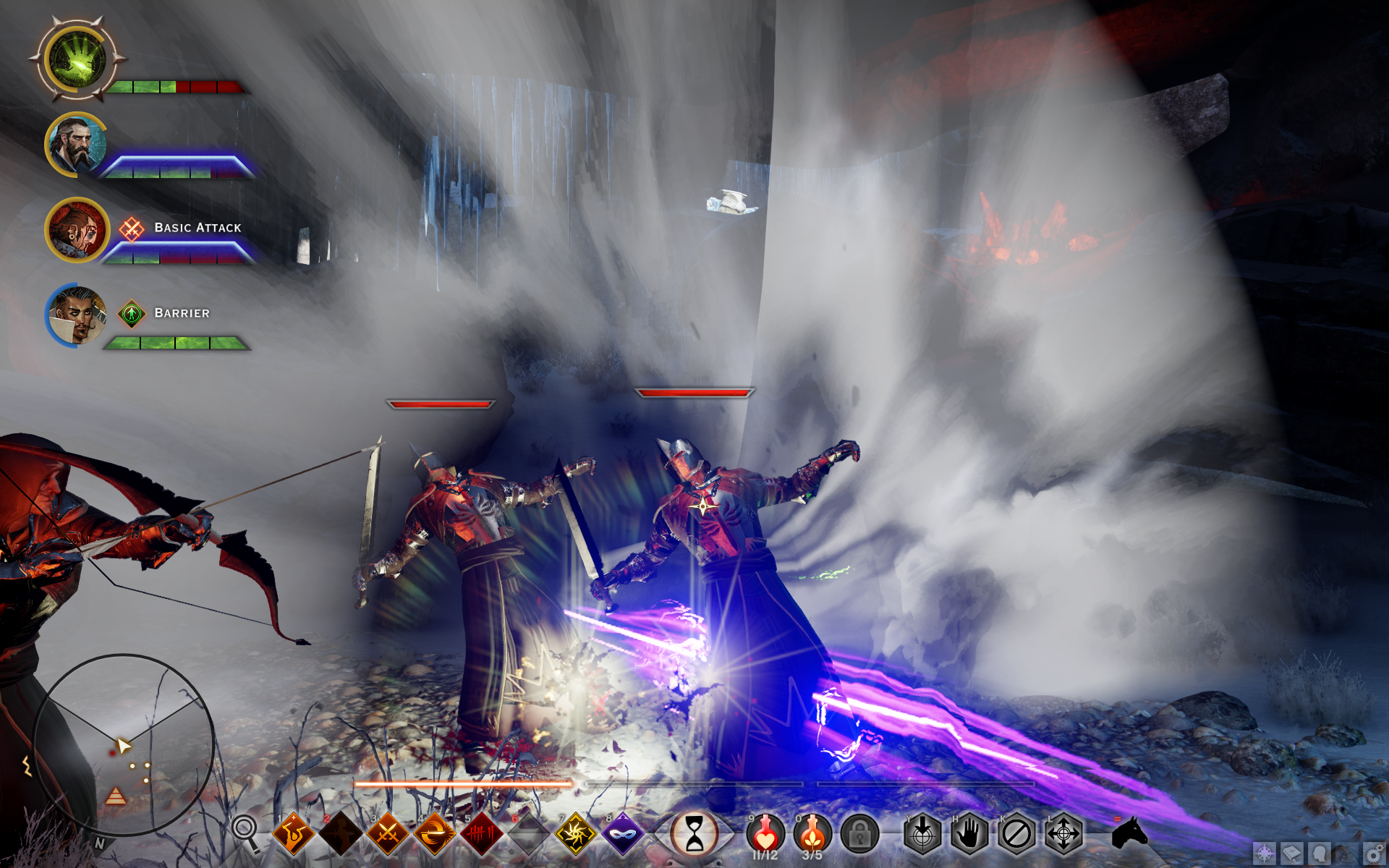
The accepted posture for “oh dear, a rogue has phased through me.”
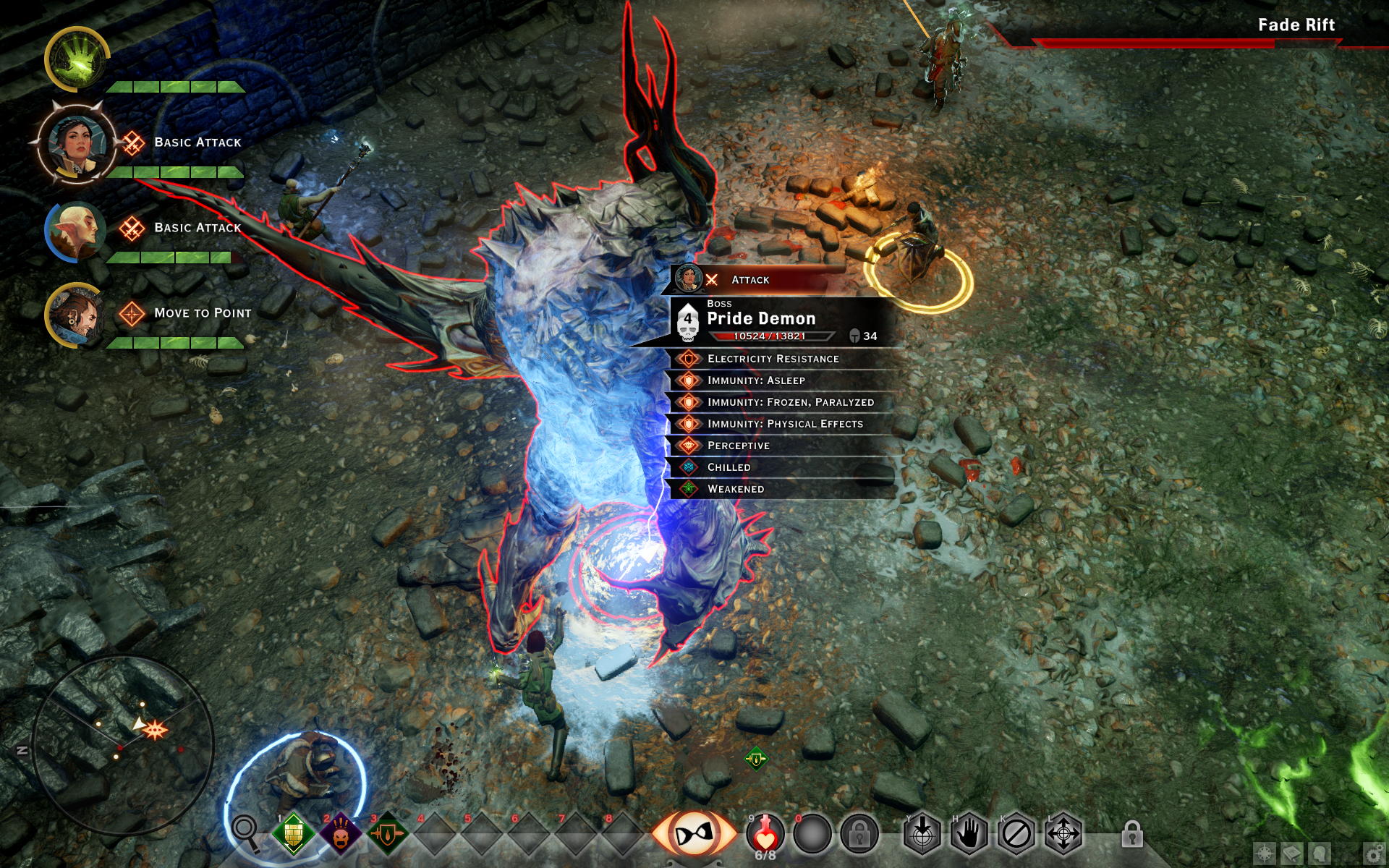
Use the tactics screen to learn the strengths of your foes.
A fantastic campaign and massive open environments, soured only slightly by minor, persistent flaws.

Phil has been writing for PC Gamer for nearly a decade, starting out as a freelance writer covering everything from free games to MMOs. He eventually joined full-time as a news writer, before moving to the magazine to review immersive sims, RPGs and Hitman games. Now he leads PC Gamer's UK team, but still sometimes finds the time to write about his ongoing obsessions with Destiny 2, GTA Online and Apex Legends. When he's not levelling up battle passes, he's checking out the latest tactics game or dipping back into Guild Wars 2. He's largely responsible for the whole Tub Geralt thing, but still isn't sorry.
